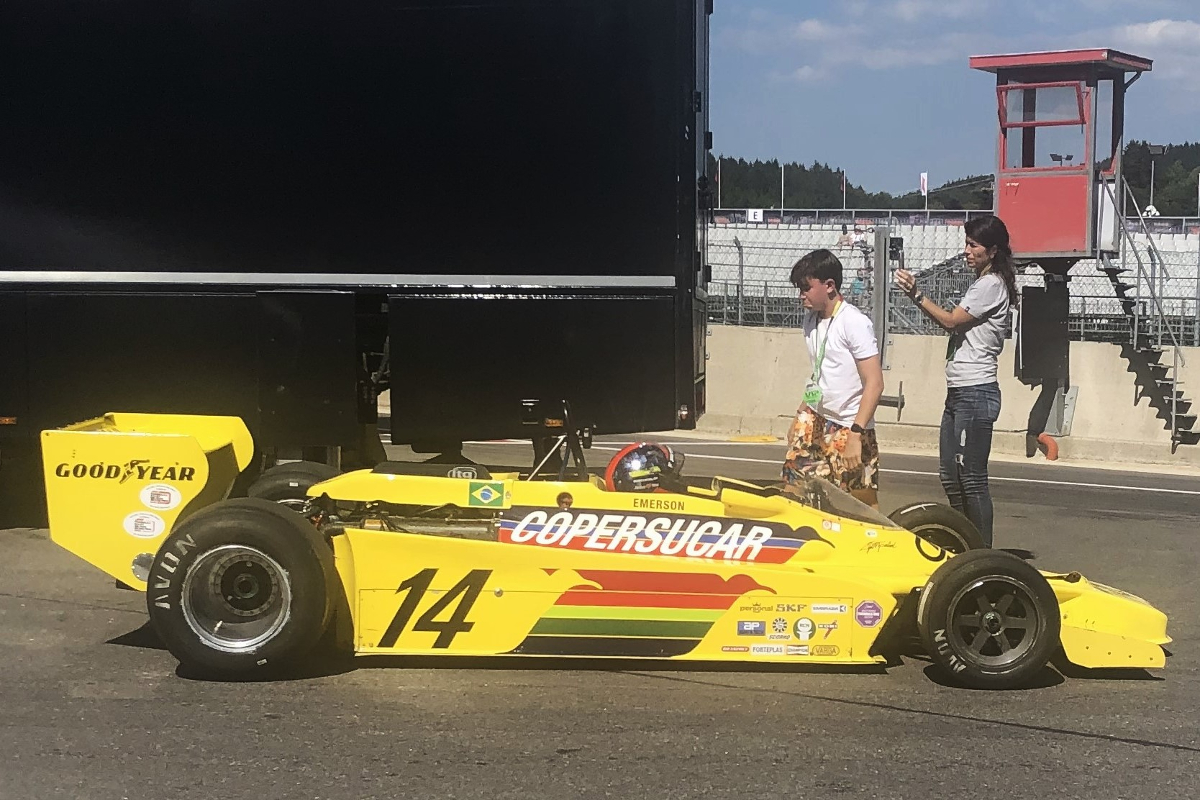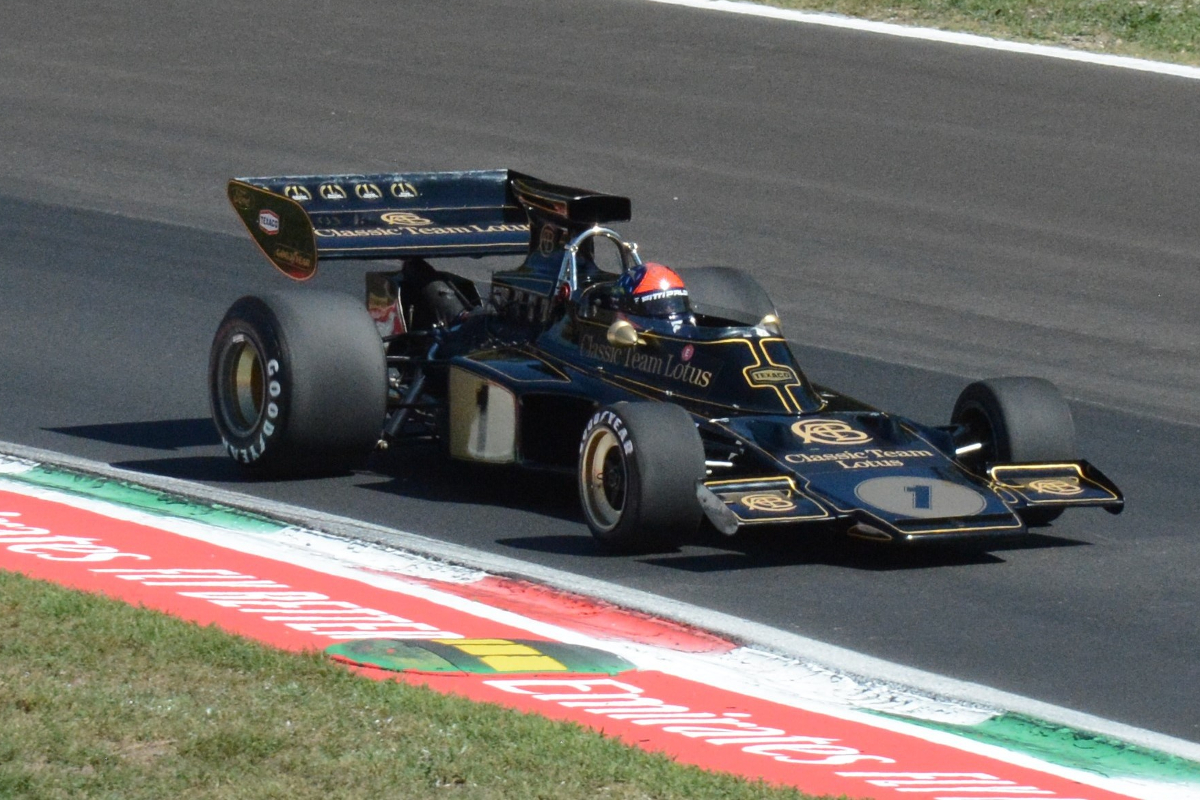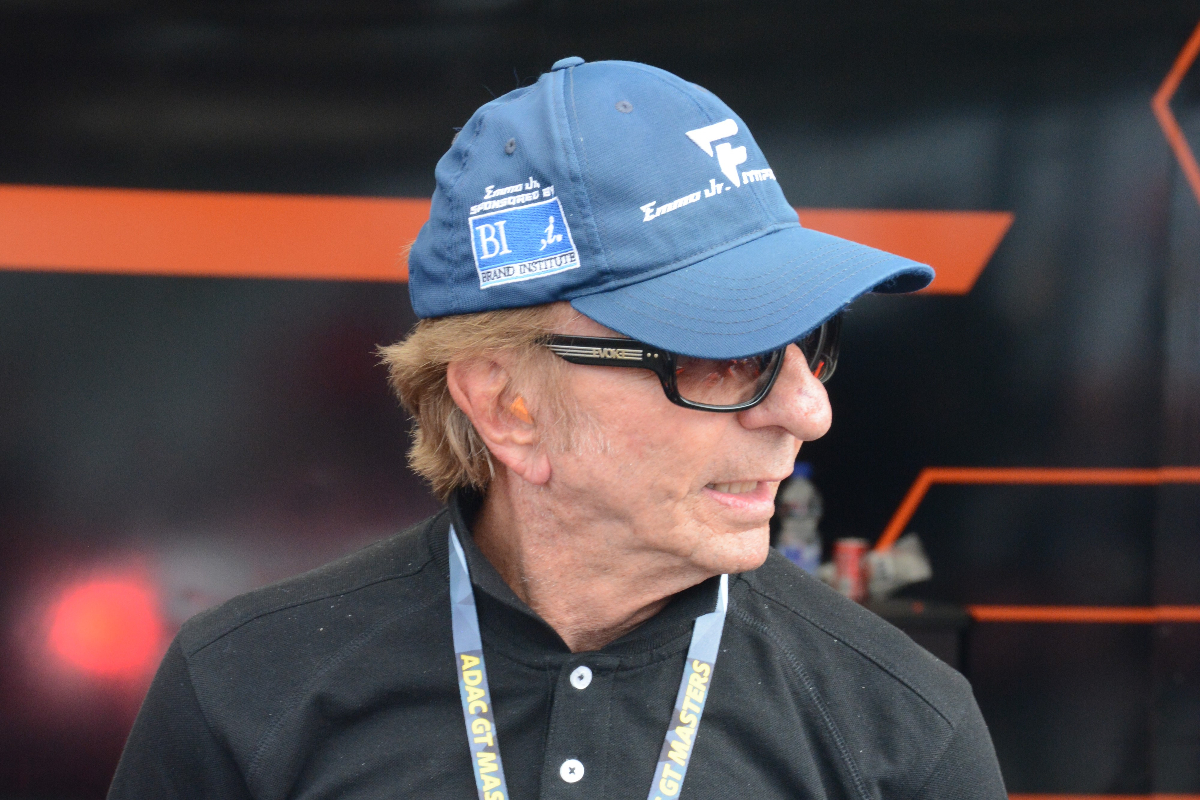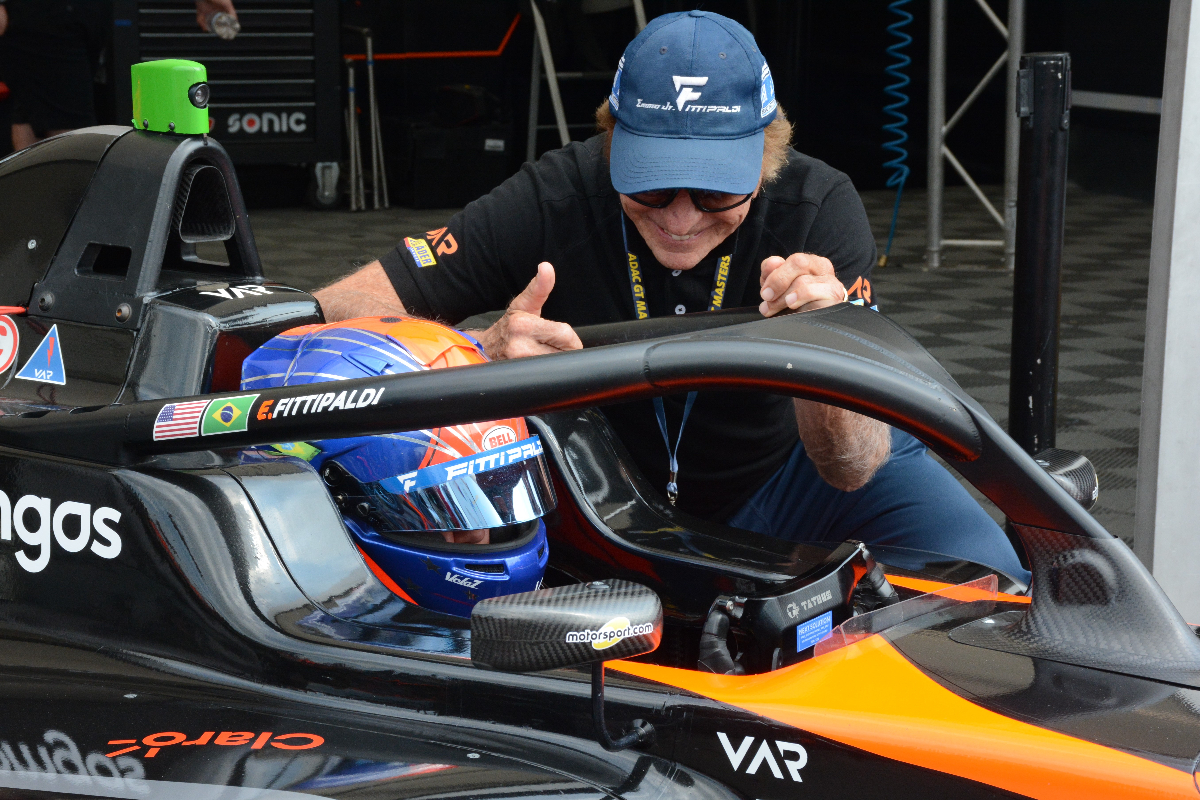 Imagine a driver today debuting in F4, then switching to F3 mid-way through their rookie year. Despite joining mid-season, they win the F3 title and go to F2 the next year. By July they’re in F1, and win their fourth race
Imagine a driver today debuting in F4, then switching to F3 mid-way through their rookie year. Despite joining mid-season, they win the F3 title and go to F2 the next year. By July they’re in F1, and win their fourth race
In 1969 and 1970 that is exactly the path trodden by motorsport legend Emerson Fittipaldi. Furthermore, just over two years later, he was crowned Formula 1 world champion at Monza for Lotus, the youngest title winner until his record was broken by Fernando Alonso in 2005.
Formula Scout caught up with Fittipaldi in the ADAC Formula 4 paddock at Zandvoort last year as he guided his son Emmo on his first steps in single-seaters.
Fittipaldi, who recently turned 76, is still a busy man. He drove a Copersucar F1 car from 1978 at Spa-Francorchamps last year [pictured below], as well as his title-winning Lotus 72 at Monza on the 50th anniversary of the victory that won him the title. He continues to manage his multiple business interests and even stood, albeit unsuccessfully, for election to the Italian senate.
After speaking to Formula Scout, he was heading to Brands Hatch, where “I am doing a programme for Sky TV driving the Lotus that I won the British GP with,” he explains.
Fittipaldi arrived in Britain in 1969 after racing successfully in karts and Formula Vee at home in Brazil. He initially approached Frank Williams, who he had met the year before in Argentina, to buy a Titan Formula Ford chassis but, after learning that he would need to wait two months, got a Merlin FFord car instead.
“Dennis Rowland was doing my engines and during the week I worked as his mechanic to prepare cylinder heads, exhaust pipes in his garage in Wimbledon,” says Fittipaldi. “My first FFord race outside of Brazil was at Zandvoort. We tested on the way [to Dover]. We stopped in Lydden Hill and we only did something like 20 laps and then we came here [to Zandvoort] and it was a European championship race, a lot of kids from all over Europe and it was fun.”

Photos: Roger Gascoigne
The weekend didn’t go quite to plan though. “I had the FFord on a trailer and Dennis came with me. He prepared the engine and the chassis and then there was a lot of cars so they split [the entries] into two heats. Too many cars. I was on pole position for my first race in Europe. First lap I am leading, go past the pits and exactly here, going into Tarzan, I broke a rod and the rod breaks through the block. And that was that. All the way from Brazil!” he laughs.
“It was different then. I had the trailer and one guy and then only one race. And then I put the next engine together myself to start the race at Snetterton. Crazy. Different from now.”
In that race at Snetterton in May 1969, Fittipaldi took pole, fastest lap and victory. Further wins and podiums followed, both in Britain and in Europe, attracting the attention of Jim Russell, founder of the eponymous racing school at Snetterton.
And, astonishingly, by July Fittipaldi was making his debut in the British Formula 3 championship at Mallory Park, driving a Lotus 59, by no means the favoured chassis in F3 at the time.
“I met Jim Russell at Snetterton, and Jim said ‘I’m going to give you a F3 car’ after three months of driving a FFord car.”
“My mechanic was Ralph Firman, who started Van Diemen. And so Firman, Jim Russell’s brother-in-law, got his first job.”
“I started in July in British F3. I did half of the championship and I won. I was lucky,” he added. “That’s how I took my first championship out of Brazil. It was fantastic with Jim Russell.”
In F3, Fittipaldi had won three times at Brands Hatch, twice at Mallory Park and once at Thruxton. He became hot property, and was offered F1 drives by both Colin Chapman and Frank Williams. He turned them both down, reasoning that he needed more experience.
 A deal was done for Russell to run a Lotus 69 chassis, borrowed from the works team, for the move up to Formula 2 for 1970. Despite a few niggling problems in the early rounds, by round three in Barcelona, at the majestic Montjuic street circuit in the heart of the city, he had been snapped up by Chapman for a works Lotus drive.
A deal was done for Russell to run a Lotus 69 chassis, borrowed from the works team, for the move up to Formula 2 for 1970. Despite a few niggling problems in the early rounds, by round three in Barcelona, at the majestic Montjuic street circuit in the heart of the city, he had been snapped up by Chapman for a works Lotus drive.
That year’s Lotus F2 cars were not the fastest but Fittipaldi did enough to impress the mercurial Lotus boss. This time he didn’t turn Lotus down and made his F1 debut at Brands Hatch later that season. Thrown into deep end as team leader following Jochen Rindt’s tragic death at Monza, Fittipaldi qualified third at Watkins Glen for the United States Grand Prix, inheriting the lead when Jackie Stewart and Pedro Rodriguez hit trouble. Amazingly, he won in only his fourth ever F1 start.
Two world championships followed, with Lotus in 1972 and McLaren in 1974. But the F1 and wider sporting world was stunned when for 1976 he left McLaren, opening up a last-minute opportunity for former F3 rival, James Hunt, and joined his brother Wilson’s Copersucar-backed Fittipaldi team. The dream was of a national Brazilian superteam to take on the world. The reality proved rather different…
He tells Formula Scout that he doesn’t regret the move.
“No, it was a tough, tough decision, it was very hard work but for the last year I had Peter Warr as team manager, Harvey Postlethwaite as chief designer, Adrian Newey, Richard Divila, Keke Rosberg and then the sponsorship.
“Finally, I got a good deal and, unfortunately, they didn’t want to continue with it. I had top mechanics, top managers. We won the world championship together with Peter Warr [in ’72]. We had the best team, the human capacity behind [us]. In 1980 with Adrian Newey’s car, the first car he designed, we took it to Hockenheim and I think Rosberg was fourth or fifth on the grid out of the box.”
After the drama of his European racing baptism at Zandvoort, the Dutch circuit was never kind to him. “In 1973 I had a huge crash and I couldn’t race. On the last corner before the pits. Then 1974 I think I finished third.”
 “In 1973 when I crashed in qualifying, I broke the wheel. I was stuck inside the car and I couldn’t get out.
“In 1973 when I crashed in qualifying, I broke the wheel. I was stuck inside the car and I couldn’t get out.
“I was sitting in the fuel. The fuel was coming out and then the marshals were scared. My legs were trapped in the front of the car. And then Graham Hill stopped and got out of his car to help me out. I couldn’t get out. And then Jo Ramirez [came] with the toolbox, he ran from here to the last corner. Graham Hill and Jo Ramirez cut the front of the Lotus for me to get out.
“I was sitting in fuel and Jo Ramirez was thinking if some fuel leak goes to the exhaust or the disc brakes we’re all going to die but he was there, him and Hill. To see, [that’s] how it was at that time.
“I met him [Ramirez] at the Spanish Grand Prix this year and he didn’t remember, and he started crying. I said ‘Jo, do you remember, you saved my life’. It’s different now. He was another great guy.”
“I was lucky to race with so many great drivers. But in F1 the first was Jackie Stewart. I was lucky to race four years with him – ‘70, ‘71, ‘72, ‘73. From the generation before mine, I raced with Hill. They were my idols. Jack Brabham, Denny Hulme, all these guys. Chris Amon, Jacky Ickx.”
“But, Jackie was special because we raced wheel-to-wheel many times and he was fantastic. And then I admired Andretti. And I had the sons – I raced with Gilles [Villeneuve] and then I raced against Jacques in Indy. Father and son. Bobby Unser and Al Unser Jr. I raced with three generations. It was fantastic and always the great champions diced together and never a problem.”
Three years after retiring from F1, he made a surprise, and hugely successful move to IndyCar. He won the 1989 title and claimed a total of 22 race victories, including twice winning the Indianapolis 500.
“I always wanted to drive at Indianapolis because Colin Chapman won with Jim Clark in ’65,” he explains. “I kept asking Colin,” but to no avail, and later even tried a McLaren Indy car at the Brickyard.
He looks back fondly on the rivalry with Nigel Mansell. “The biggest, most fun race was Cleveland 1993. In two or three laps I changed positions seven times with Nigel. On the limit. On the edge of the asphalt.”
A frightening crash at the Michigan Speedway in 1996 put an end to a glittering career at the wheel. But it gave him, he says, much more.
“My best ever win was when I crashed at the Michigan Speedway. God put a hand on me and he called me. This is my biggest victory,” Fittipaldi says.
Alex Ribeiro, a race winner in European F2 in 1978, was at the time “in Brazil the president of the Athletes of Christ” and proved influental to Fittipaldi.
“He came with the Bible. I looked at him and said ‘are you coming to pray because I’m going to die?’. And he said ‘no, no, I’m going to introduce you to Jesus’.
“Now I’m 100% Christian. I realised how much God has done in my life, for my family, to me, and I thank God every day of my life. It’s the most important thing in my life after Michigan Speedway.”
The only Brazilian driver of note prior to Fittipaldi’s arrival had been Chico Landi who drove in six grands prix in the 1950s. Fittipaldi, brother Wilson and Carlos Pace represented the true beginning of Brazil’s influence on F1. Sadly, Pace was lost in a plane crash in 1975, but Fittipaldi has been the flag bearer and benchmark for subsequent generations.
“It was myself, my brother and Carlos Pace, the three of us as the first in F1,” he says. “Jackie Stewart used to say ‘another BB’ – another bloody Brazilian! Every time he meets another Brazilian, he said ‘another BB’,” he laughs.
The Fittipaldis’ single-seater pedigree
| Name | Age | Professional | Junior |
|---|---|---|---|
| Emerson | 76 | 2 F1 titles, 1 IndyCar title, 2 Indy 500 wins | 2 Brazilian F2 titles, wins in European and French F2, British F3 title, 1 Brazilian FFord title |
| Wilson | 79 | 35 races in F1 | Coppa di Santamonica winner, podiums in European F2, Int. Brazilian F3 winner, Coupe du Salon winner |
| Christian | 51 | 40 races in F1, 2 IndyCar wins | Int. F3000 title, F3 Sudamericana title, Brazilian F3 title |
| Pietro | 26 | 2 races in F1, 9 races in IndyCar, 1 race in SuperF | FV8 3.5 title, MRF Challenge title, FR2.0 BARC title, 1 BRDC British F4 win |
| Enzo | 21 | 6 F2 podiums, 1 FIA F3 podium, 2 FREC wins, 1 ADAC F4 win, Italian F4 title | |
| Emmo | 15 | 2 Danish F4 wins |
“When Ayrton [Senna] wanted to come to Europe, he came with his father to my office in Sao Paulo and said: ‘well, we’d like to follow in your steps and go to England to drive in FFord’.
“I immediately picked up the phone, called Ralph [Firman]. I said ‘Ralph, I have another Brazilian driver who’s going to win the championship for you’. ‘You are kidding!’, he said. And then Ayrton came to England.
“Unfortunately, I never raced with Ayrton. Ayrton tested my car. I invited him to test [a Penske Indy car] at Phoenix. He loved it. I asked Roger [Penske] to take him to Indianapolis,” Fittipaldi remembers. “My dream was starting in Indianapolis with Ayrton and Nigel.
“Nigel came in ‘93 and Ayrton nearly came. But then Ron Dennis didn’t allow him to come. But he was very close to coming to Indy. He wanted to win Indianapolis. I am sure Ayrton would [have been] very fast.”
The Fittipaldi dynasty is arguably the strongest motorsport has ever seen. Emerson’s nephew Christian won the 1991 International F3000 title, while grandsons Pietro and Enzo are active in today’s F1 and support paddocks. Pietro was 2017 Formula V8 3.5 champion and is Haas’s F1 reserve driver, while Enzo was a revelation last year as he came eigth in his rookie F2 season.
The youngest member of the family, Fittipaldi’s 15-year-old son Emmo Junior, is racing in F4, although he has already sampled FIA F3 machinery. Emmo Jr is, his father naturally believes, “very good”.
“He’s very young – he turned 15 in March [2022]. He is learning, he loves [it]. He is the only son who since [he was] five years old [said], ‘I want to race, I want to race’. I have three boys, the older ones never liked racing. I never pushed them to race, but him: ‘I want to race, I want to race’. He’s enjoying every second and I think it’s a long way to go. You know how tough it is, but it is a challenge.”
 And how is Emerson as a racing dad?
And how is Emerson as a racing dad?
“I am always his spotter on the corners. I like to leave him with the engineers, but I’m always watching and giving some opinion. He has a very good engineer and a good team to take care of him. I always like to be in the background.”
He laughs. “You know what they always say? The fathers of drivers and the mothers of Miss Universe are a disaster.”